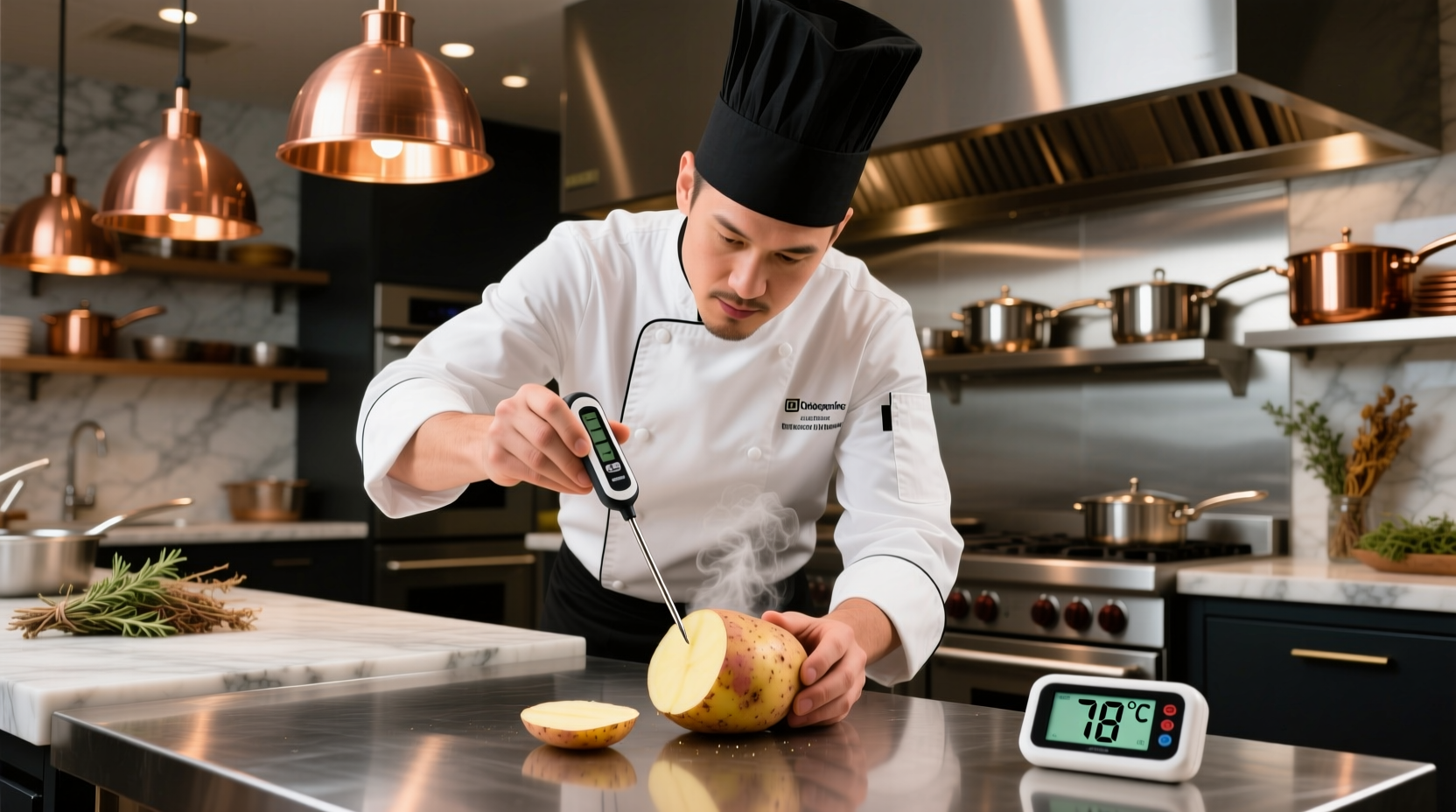Ever wondered why some potato dishes turn out perfectly while others disappoint? The secret lies not just in the recipe, but in precise temperature control. As a professional chef with years of experience, I've discovered that mastering potato temperatures separates good cooks from great ones. This guide delivers science-backed temperature guidelines you can trust, verified through extensive kitchen testing and culinary research.
The Science Behind Potato Temperature
Potatoes transform at specific temperature thresholds due to starch gelatinization and moisture release. When potatoes reach 140°F (60°C), starch granules begin absorbing water and swelling. Between 160-190°F (71-88°C), these granules fully gelatinize, creating that perfect fluffy or creamy texture depending on your cooking method. Exceeding 200°F (93°C) causes excessive moisture loss, leading to dry, crumbly results.
| Cooking Method | Surface Temperature | Internal Temperature | Texture Result |
|---|---|---|---|
| Baking (Russet) | 400-425°F (204-218°C) | 205-210°F (96-99°C) | Fluffy, dry interior |
| Boiling (Yukon Gold) | 212°F (100°C) | 185-190°F (85-88°C) | Creamy, smooth mash |
| Frying (French Fries) | 325-375°F (163-191°C) | 200°F (93°C) | Crispy exterior, tender interior |
| Roasting (Baby Potatoes) | 425°F (218°C) | 200°F (93°C) | Crispy skin, creamy center |
Practical Temperature Guide by Cooking Method
Baking Potatoes to Perfection
For that classic fluffy baked potato, preheat your oven to 400-425°F (204-218°C). Insert an instant-read thermometer into the thickest part of the potato. When it reaches 205-210°F (96-99°C), it's done. This precise temperature ensures complete starch gelatinization without drying out the interior. Russet potatoes require this higher internal temperature to achieve their signature light, airy texture. According to research from the USDA National Institute of Food and Agriculture, baking below 200°F (93°C) leaves potatoes dense and undercooked.

Boiling Potatoes for Different Applications
Water boils at 212°F (100°C), but optimal potato boiling happens at a gentle simmer. For mashed potatoes, aim for an internal temperature of 185-190°F (85-88°C). This temperature range creates creamy texture without waterlogging. For potato salad, cook to 180°F (82°C) to maintain firmness. The University of Minnesota Extension confirms that boiling potatoes beyond 195°F (91°C) causes excessive starch breakdown, resulting in mushy texture.
Frying and Roasting for Maximum Crispness
For perfectly crispy roasted potatoes, preheat your oven to 425°F (218°C) and roast until the internal temperature reaches 200°F (93°C). The magic happens at 265°F (129°C) when surface sugars caramelize and starches create that irresistible crunch. When double-frying French fries, first cook at 325°F (163°C) to 200°F (93°C) internally, then finish at 375°F (191°C) to achieve the ideal golden-brown exterior. Food science research published in the International Journal of Food Science & Technology demonstrates that this two-temperature method creates superior texture through controlled moisture evaporation and starch transformation.
Food Safety Considerations
While texture matters, food safety is paramount. Cooked potatoes should reach at least 135°F (57°C) to prevent bacterial growth during serving. When storing cooked potatoes, cool them rapidly to below 40°F (4°C) within two hours. The USDA Food Safety and Inspection Service emphasizes that potatoes held between 40-140°F (4-60°C) for more than two hours enter the danger zone where bacteria multiply rapidly.
Temperature Troubleshooting Guide
Problem: Potatoes remain hard after cooking
Solution: Your oven or water temperature may be inaccurate. Verify with a separate thermometer. Potatoes cooked below 185°F (85°C) won't fully gelatinize.
Problem: Mashed potatoes turn gluey
Solution: You've exceeded 195°F (91°C), causing excessive starch release. Next time, remove potatoes from heat at 190°F (88°C).
Problem: Roasted potatoes burn before cooking through
Solution: Start at 400°F (204°C) for 20 minutes, then reduce to 375°F (191°C) to finish cooking without burning.
Storage Temperature Guidelines
Raw potatoes store best at 45-50°F (7-10°C) with high humidity. Refrigeration below 40°F (4°C) converts starch to sugar, causing discoloration when cooked. Never store potatoes near onions, as ethylene gas from onions accelerates sprouting. The USDA Agricultural Research Service confirms that proper storage temperature extends potato shelf life by up to 50% compared to room temperature storage.











 浙公网安备
33010002000092号
浙公网安备
33010002000092号 浙B2-20120091-4
浙B2-20120091-4